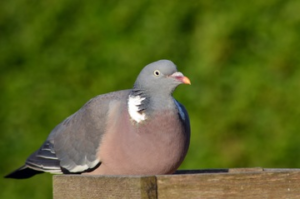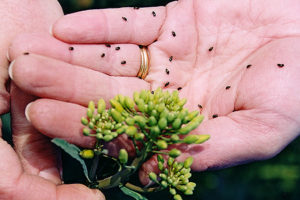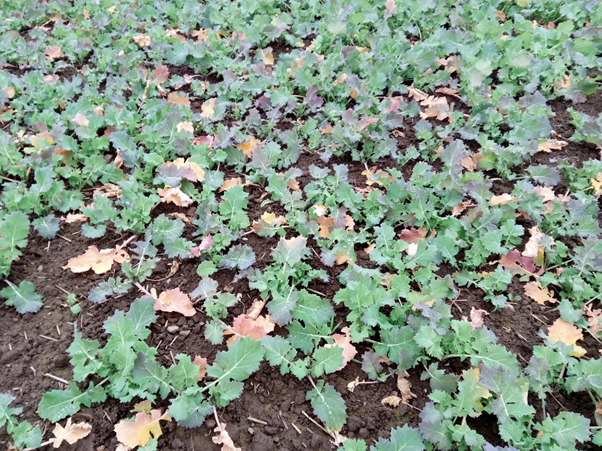Winter oilseed rape – March 2020
5 March 2020Diseases
Fungicide sprays to manage light leaf spot are best applied as preventatively as possible – usually at early stem extension (‘welly-boot height’). The warm weather has given many crops a bit of a growth spurt so walk crops and judge infection. Fungicide dose should reflect risk – so on weak varieties in high-risk areas such as the north-east the rate could be closer to ¾ dose and on better varieties where the disease is less prevalent, then a half dose might be sufficient. Try and plan ahead and think of your flowering spray options early. If you intend these to be purely for sclerotinia protection, then you want the welly-boot spray to essentially carry the crop all the way through the season which is a big ask. Using actives with some efficacy against light leaf spot at early flowering can offer some chance for a top-up but if that is your plan you could think now about diversifying the chemistry and not, for example, using an azole at both, or an SDHI at both.
Pests
Pigeon damage to crops has been widespread this season, as there have been ‘gaps’ in the crop due to poor overwintering in many crops, that allow pigeons a place to land. Keep an eye on crops and take measures to keep pigeons off where necessary.
Rape winter stem weevil damage in crops should now become apparent in affected crops; symptoms are the production of lateral shoots at stem extension. Crops that received an insecticide treatment in late autumn should be in the clear. The grubs of rape winter stem weevil (and cabbage stem flea beetle) should now be found in infested plants of winter rape by cutting stems open at the base of the plant. Look for the grubs in any hollowed out areas. Make sure you know which pest is causing the damage. Rape winter stem weevil grubs are legless with a brown head. Cabbage stem flea beetle grubs have 3 pairs of legs at the front and tend to be speckled with dark spots. Note both may occur in the same plant. There is nothing that can be done now, apart from making a mental note that there could be problems in rape crops on farm to be sown next autumn.
With some crops already at green-yellow bud, there is a risk from pollen beetle damage to the buds, giving rise to blind-stalks with no flowers or pods forming on them. A warm spell when temperatures reach 15°C will trigger pollen beetle flights into crops.
- When beetles appear in crops, note that there are updated thresholds for treatment. The plant density needs to be taken into account to estimate the threat from pollen beetles at green-yellow bud.
- Less than 30 plants/m2 – the threshold is 25 pollen beetles/plant

- Between 30-50 plants/m2 – the threshold is 18 pollen beetles/plant
- Between 50-70 plants/m2 – the threshold is 11 pollen beetles/plant
- Greater than 70 plants/m2 – the threshold is 7 pollen beetles/plant
If crops are backward because of poor overwintering, slug problems in the autumn or pigeon damage, then their capacity to cope with pollen beetle damage is reduced, so a lower threshold should be adopted for these crops.
These thresholds have been revised to help deal with the increased threat from pyrethroid insecticide pollen beetles in UK crops by ensuring that insecticides are only applied when necessary.
Resistance in pollen beetles to pyrethroid insecticides has been found in Scotland. The advice to growers is that pyrethroid insecticide use for pollen beetle control should only be used if the treatment thresholds have been exceeded. Remember that once the crop is in flower the beetles can easily reach the pollen they desire without damaging the flower, so no flowering crops should be sprayed for pollen beetle control.
Sign up to the FAS newsletter
Receive updates on news, events and publications from Scotland’s Farm Advisory Service

